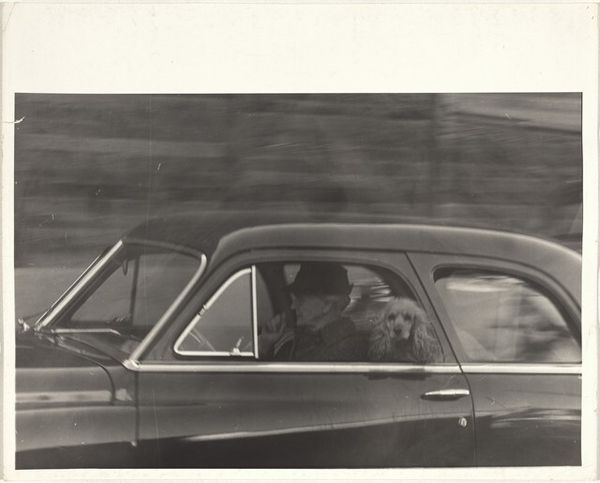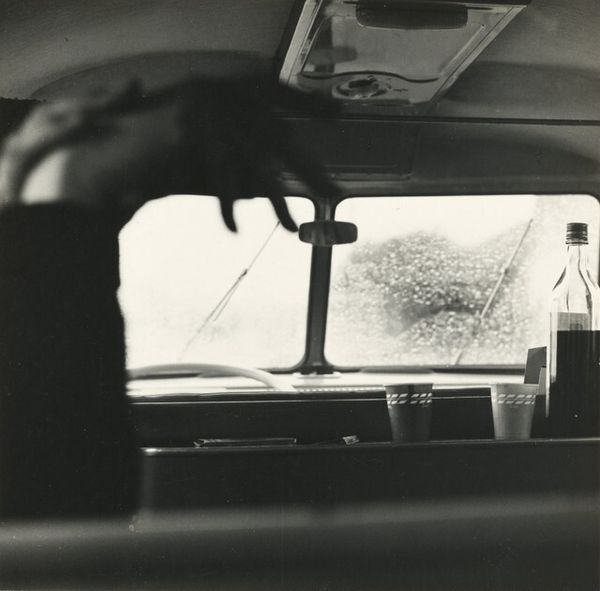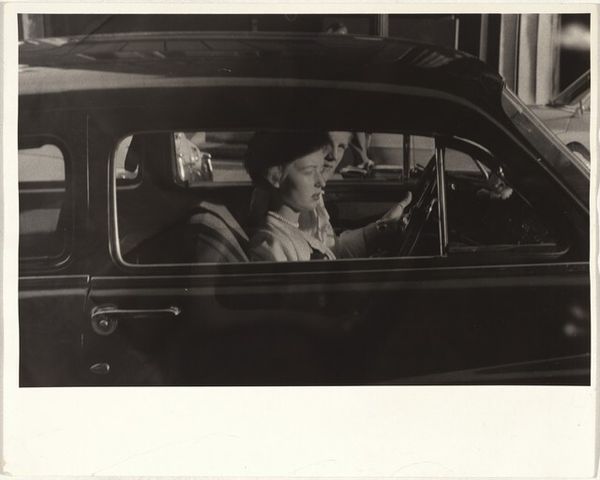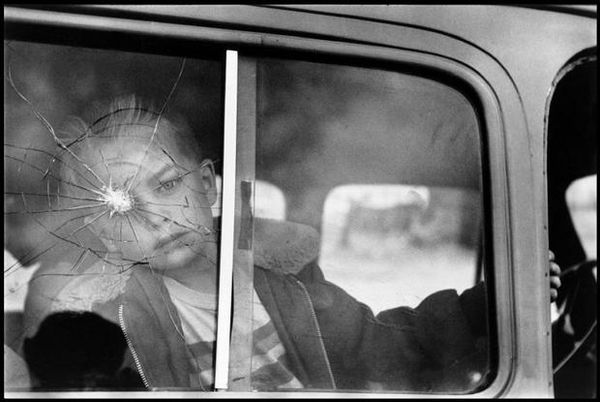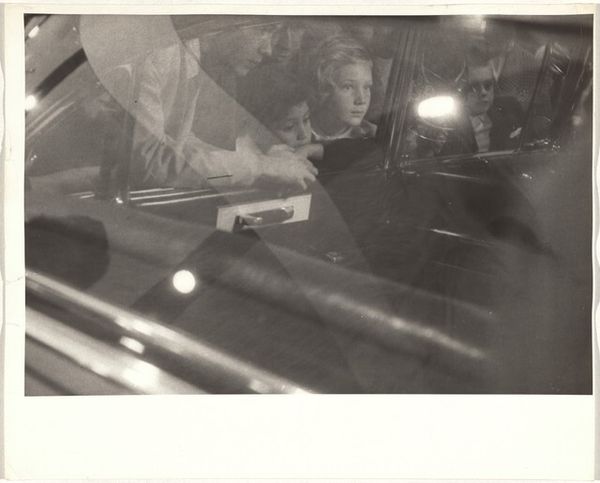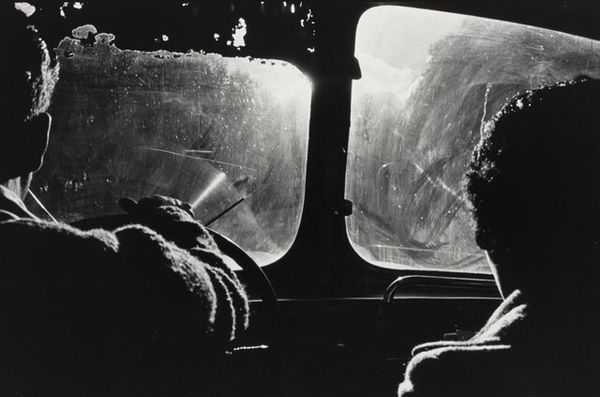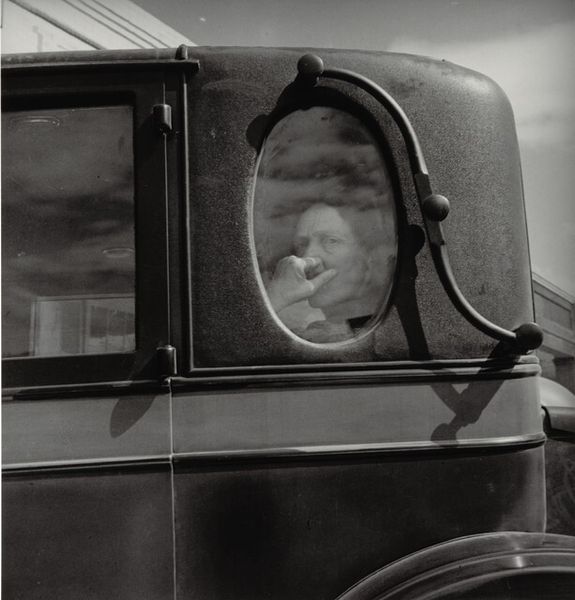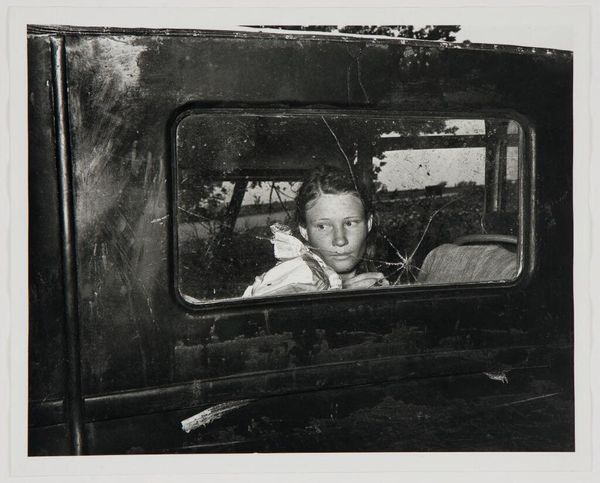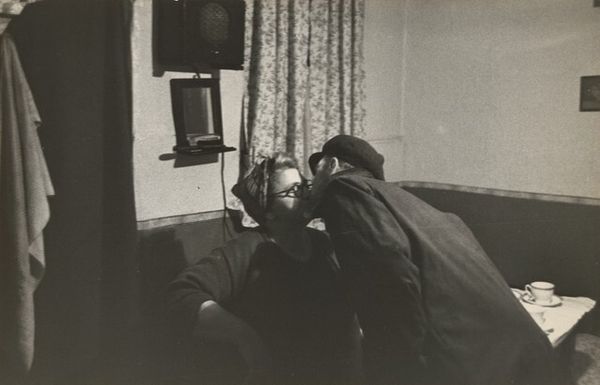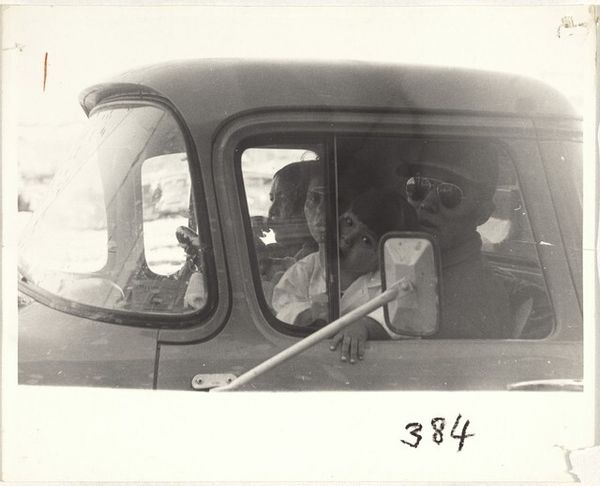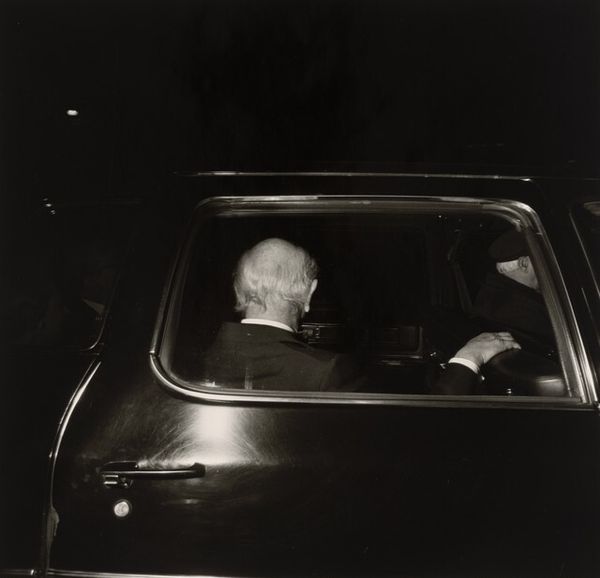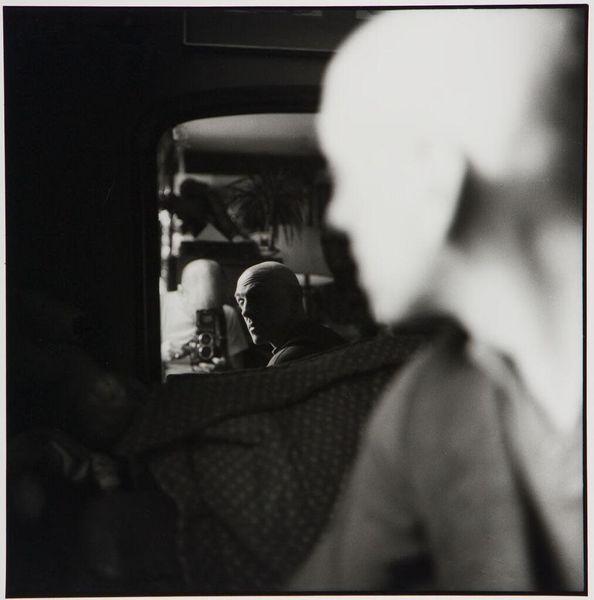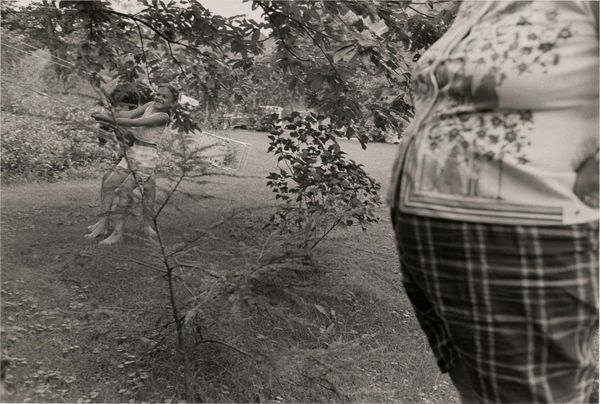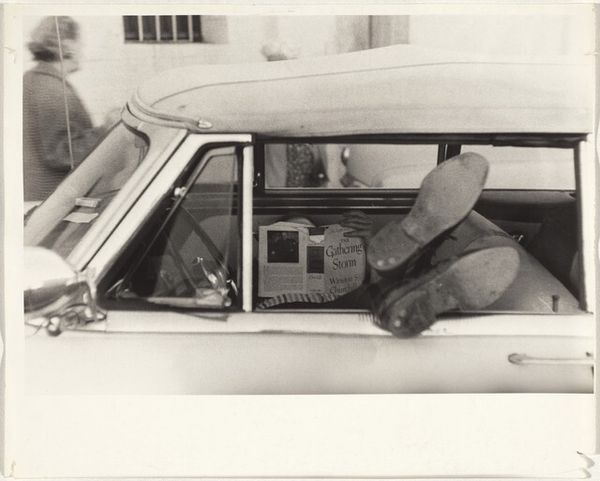
photography, gelatin-silver-print
#
portrait
#
black and white photography
#
black and white format
#
street-photography
#
photography
#
black and white
#
gelatin-silver-print
#
monochrome photography
#
monochrome
#
realism
#
monochrome
Dimensions: image/sheet: 18.73 × 24.13 cm (7 3/8 × 9 1/2 in.) mount: 33.66 × 38.1 cm (13 1/4 × 15 in.)
Copyright: National Gallery of Art: CC0 1.0
Curator: Wynn Bullock’s photograph, “Girl in Car,” made sometime between 1960 and 1974, is a captivating study in captured moments. Editor: It's… melancholic, almost claustrophobic. That monochrome palette really drives home a sense of introspection, wouldn't you say? Like she's trapped in her own thoughts as much as in the car. Curator: Bullock’s realism captures the stillness of a moment, almost a film still. We’re offered only her guarded gaze through a car window, slightly ajar to let in a bit of reality. Editor: A bit of reality that she's consciously holding at bay, perhaps. Look at how the open window fractures the view, creating another layer of separation. It makes you wonder what she's running from, or towards. Or maybe if she wants to escape her reality in a place like this. Curator: The image becomes a vessel for questions of social context and personal space, especially for women in that era. Cars in the mid-20th century were more than mere transport; they represented freedom, or sometimes its illusion. Editor: Precisely! The automobile became an emblem of liberation, but here, framed so tightly, it suggests more constraint than agency. It's an interesting play on the politics of imagery, turning the expected narrative on its head. Curator: In that context, even the gelatin-silver print lends itself to our appreciation. Bullock coaxed amazing luminosity, allowing us glimpses of emotional complexities of being a woman that resonate. Editor: A remarkable ability to suggest narrative with the barest of details. Bullock hands us the prologue, lets *us* fill in the story. And that makes all the difference, doesn't it? Curator: Absolutely, letting us interpret themes of womanhood, interiority, and society reflected through his artistry. The open-endedness and subtle complexity invite deep contemplation about the nature of captured moments in history. Editor: It really highlights that boundary of individual lives versus social structures of life back then. Fascinating to see this snapshot of personal stories interplaying!
Comments
No comments
Be the first to comment and join the conversation on the ultimate creative platform.
